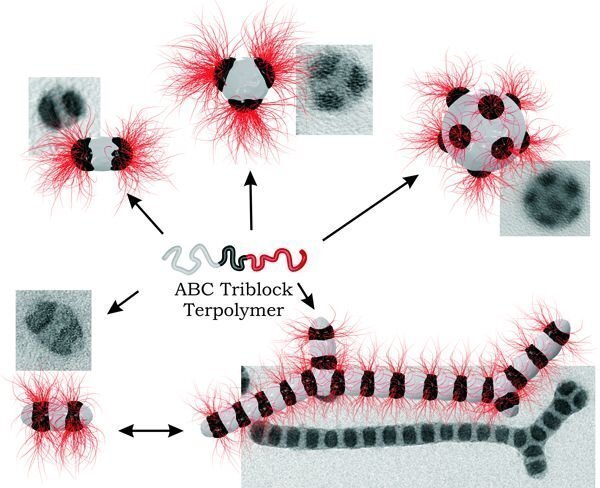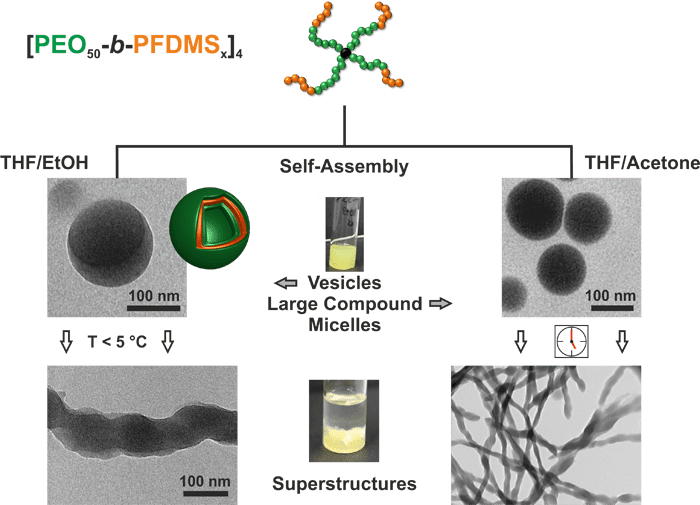Structural Hierarchy
Hierarchical materials combine structural features on several length scales, ranging from nm to µm dimensions. The self-assembly of block copolymers in solution into micellar structures of different morphologies is well established. Typical size regimes are 10-500 nm, including vesicular and cylindrical structures. We would like to go a bit further and equip such micelles or, as an alternative, nanoparticles, with further functionality or responsiveness. Upon release of a suitable trigger, these particles shall act as building blocks or "unimers" and allow for the controlled build-up of colloidal structures in the range of several µm.
Hierarchy in this case would be:
Monomer - Polymer - Block Copolymer - Micelle / Nanoparticle - Mesoscopic Aggregates
Our aim is to develop platforms where nanometer-sized objects can be used as building blocks for the controlled preparation of ordered structures. Synthetic control would start at the molecular level = the monomer choice. One system we are currently investigating in collaboration with groups in Bayreuth (Axel H. E. Müller) and Aachen (Andreas Walther) are linear ABC triblock terpolymers and their step-wise hierarchical self-assembly in dilute solution.
see also "Precise Hierarchical Self-Assembly of Multicompartment Micelles", Nature Communications, 3:710, 2012, DOI: 10.1038/ncomms1707
Image: Felix H. SchacherWe are also investigating the self-assembly of crystalline-coil star block copolymers in dilute solution (solvent mixtures). We could recently show that star-shaped poly(ethylene oxide)-block-polyferrocenyldimethylsilane PEO-b-PFDMS block copolymers with 4 arms form vesicles and superstructures thereof in mixtures of a non-selective (THF) and a selective (alcohols, acetone) solvent. Structure formation was even shown to be reversible.
see also "Hierarchical Self-Assembly of Star-shaped Organometallic Crystalline-Coil Block Copolymers in Solution" - Soft Matter 8, 2012, 6968-6978, DOI: 10.1039/C2SM25245G
Image: Felix H. Schacher
